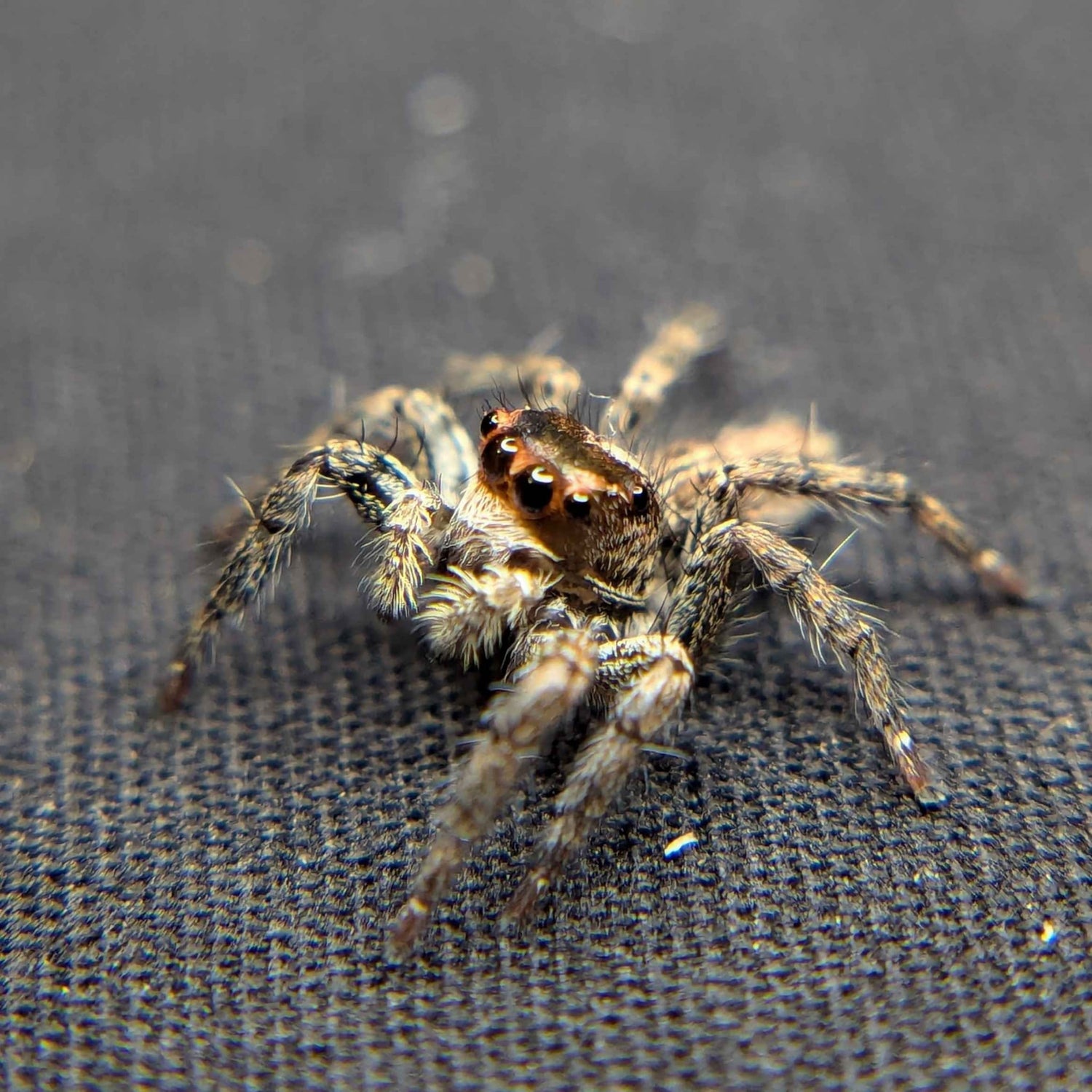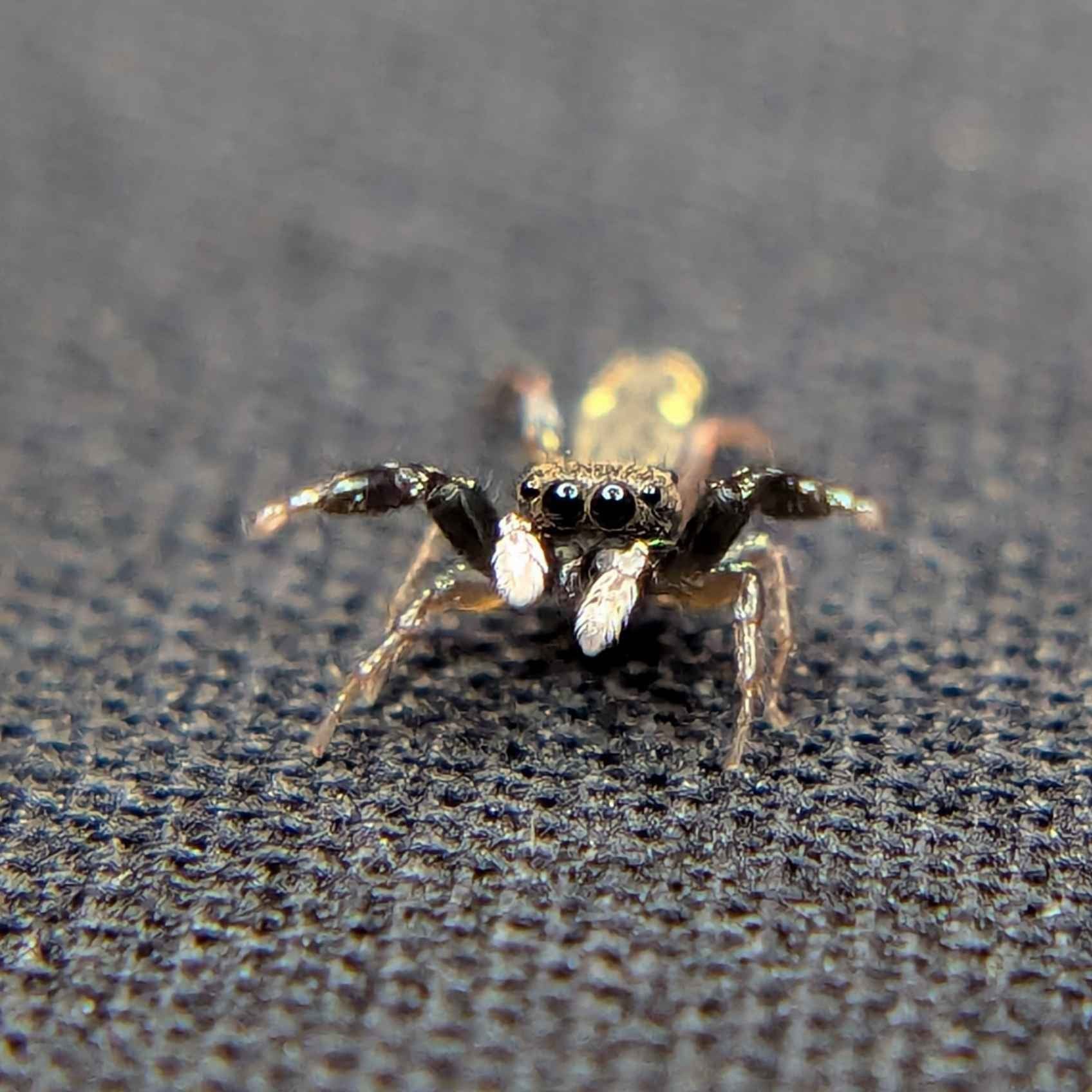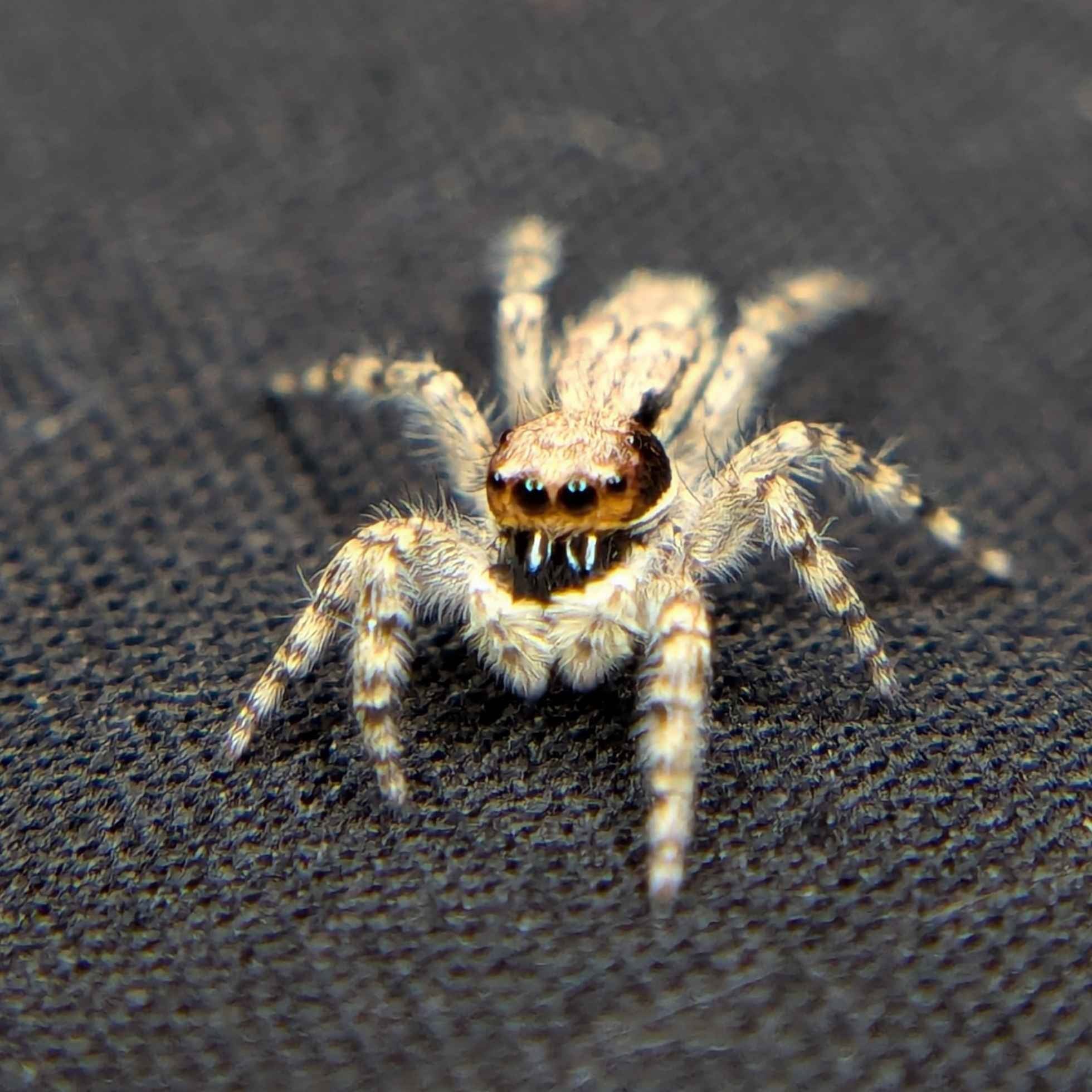The Pantropical Jumping Spider, also known by its scientific name Plexippus paykulli, is an active and fascinating species of jumping spider found in tropical and subtropical regions worldwide. This species is recognized for its characteristic jumping behavior, large eyes, and bold hunting techniques, making it a popular choice among arachnid enthusiasts. Its striking appearance and inquisitive nature provide an entertaining and low-maintenance pet for those interested in keeping jumping spiders.
Here’s a comprehensive care guide to help you take care of your Pantropical Jumping Spider.
Basic Information
Scientific Name: Plexippus paykulli
Common Name: Pantropical Jumping Spider
Family: Salticidae (Jumping Spiders)
Size: Approximately 1–1.5 cm (body length, excluding legs)
Lifespan: 1-2 years (females generally live longer than males)
Native Range: Found throughout tropical and subtropical regions including parts of Africa, Asia, South America, and the Pacific Islands. The species has also been introduced to other parts of the world including North America.
Enclosure Setup
Terrarium Size: A small enclosure, 4x4x4inch, will be perfect for this spider. The enclosure should have vertical space for climbing and jumping, as jumping spiders are very active and need room to move.
Substrate: Although not required, jumping spiders do not burrow, so the substrate should be kept shallow. Use a light, absorbent substrate such as coconut fiber, peat moss, or paper towels if you choose to do so. Aim for a depth of 1 inch. Ensure that the substrate remains dry, as excessive moisture can lead to mold growth.
Climbing Structures: Provide plenty of vertical climbing surfaces, such as branches, twigs, cork bark, or silk plants. Plexippus paykulli is an excellent climber and jumper, so the more climbing and jumping opportunities you provide, the better.
Hide: While not as secretive as other species, it’s important to give the spider a place to retreat when it feels threatened or needs to rest. Cork tubes, small pieces of bark, or even leaves can serve as hides.
Ventilation: Ensure proper ventilation to prevent excess humidity and mold. Provide sufficient air holes, especially if using a closed enclosure. Good airflow is crucial for maintaining a healthy environment for your spider.
Temperature and Humidity
Temperature: Plexippus paykulli thrives in moderate temperatures ranging from 22–28°C (72–82°F). Avoid temperatures above 30°C (86°F), as high heat can cause stress or harm to the spider. Room temperature typically works well, as long as it’s stable and not subject to rapid changes.
Humidity: This species prefers moderate humidity levels between 50-60%. Light misting once or twice a week is usually sufficient. Ensure that the humidity does not get too high, as this can lead to mold or mite issues. Keep the enclosure well-ventilated to allow moisture to dissipate.
Diet and Feeding
Food: Plexippus paykulli is a carnivorous spider and a skilled hunter. Feed it live prey, such as small crickets, fruit flies, small roaches, house flies, and mealworms. The prey should be about half the size of the spider to ensure it can easily capture and overpower it.
Feeding Frequency: For an adult spider, feed 2–3 times per week. Juvenile spiders will need to be fed more frequently (every 1–2 days). If there is leftover prey, remove it after 24 hours to avoid decomposition and potential pest problems.
Water: Provide water in the form of water droplets or a shallow water dish. Jumping spiders typically drink from droplets on surfaces rather than using a large water bowl. You can also mist the enclosure lightly to maintain humidity and offer water. Be sure to remove any standing water if it’s not being consumed, as it can become a breeding ground for mold or pests.
Behavior and Interaction
Activity: Plexippus paykulli is a very active and curious spider. It will spend much of its time climbing, jumping, exploring, and hunting. These spiders are diurnal, meaning they are most active during the day when they hunt for prey.
Interaction: Plexippus paykulli is generally non-aggressive toward humans, although they may bite if threatened or mishandled. Their bites are not dangerous, but can cause mild irritation. It is best to avoid handling them unless absolutely necessary, and always handle them gently if you choose to do so.
Solitary Nature: Like most jumping spiders, Plexippus paykulli is solitary and should not be housed with other spiders. Housing multiple spiders together can result in aggression and territorial disputes.
Molting and Growth
As with all arachnids, Plexippus paykulli will undergo ecdysis (molting) as it grows. During this time, the spider will shed its old exoskeleton and may appear sluggish or inactive. It’s crucial to avoid disturbing the spider while it molts, as it is vulnerable during this process.
After molting, the spider will be soft and may need a few days for its new exoskeleton to harden. During this time, the spider might not be as active or may be more cautious.
Common Health Issues
Dehydration: Symptoms of dehydration in jumping spiders include lethargy, refusal to eat, or a shriveled body. Ensure that the humidity levels are appropriate and that the spider has access to water droplets or a shallow water dish.
Obesity: Jumping spiders can become overweight if overfed, especially if provided with too much food or prey that is too large. If the spider becomes lethargic or shows a lack of interest in food, reduce the feeding frequency.
Mites: Mites can sometimes infest the enclosure, especially if it is kept too moist. To prevent mites, maintain proper humidity, clean the enclosure regularly, and remove uneaten food promptly.
Mold: Mold can appear if humidity is too high or if there is excess moisture in the substrate. Prevent this by maintaining proper ventilation and humidity levels, and regularly cleaning the enclosure.
Breeding and Reproduction
Mating Behavior: Plexippus paykulli engages in courtship displays, where the male presents himself to the female with specific movements and, in some cases, a small prey item. The female may accept or reject the male depending on her mood and health. After mating, the female will produce an egg sac.
Egg Sac and Spiderlings: After mating, the female will create an egg sac containing dozens of eggs. The sac is typically guarded by the female until the spiderlings hatch. The spiderlings will be very small and will need to be separated as they grow, as they may become cannibalistic.
Raising Spiderlings: To raise spiderlings, provide small prey items such as fruit flies or pinhead crickets. Keep them in separate containers once they begin to disperse, as juvenile spiders may fight if housed together.
Conclusion
Plexippus paykulli (Pantropical Jumping Spider) is an engaging and relatively easy-to-care-for species that makes a fantastic pet for spider enthusiasts. With its bold hunting behavior, active nature, and curiosity, this species will keep you entertained and intrigued for months. By providing a clean, well-ventilated enclosure with climbing structures, proper temperature, humidity, and a varied diet, your Pantropical Jumping Spider will thrive and become an excellent companion for arachnid hobbyists.
Enjoy watching your jumping spider stalk and pounce on its prey, and marvel at its incredible agility and fascinating behaviors!




Leave a comment
This site is protected by hCaptcha and the hCaptcha Privacy Policy and Terms of Service apply.